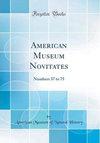Karyotypes of the North American Parthenogenetic Whiptail Lizard Aspidoscelis velox, and Return of Aspidoscelis innotatus to the Synonymy of A. velox (Reptilia: Squamata: Teiidae)
IF 1.1
3区 环境科学与生态学
Q3 BIODIVERSITY CONSERVATION
引用次数: 5
Abstract
Aspidoscelis velox is a triploid parthenogenetic species with clonal inheritance. We studied karyotypes of population samples representing diverse localities from much of its range. All specimens were triploids, but six different karyotypes were found with small differences among them, apparently resulting from chromosomal mutations that occurred after the origin of the species. As in other parthenogens, karyotypes and allozymes reveal variant clones in A. velox, but we do not recommend naming any of these genetic lineages as separate species. Specimens from the vicinity of Kanab, Kane County, Utah, have been treated by other herpetologists as a separate but morphologically similar species, Aspidoscelis innotatus, based on the assumption that they represented a diploid species. That assumption, made without any genetic evidence of ploidy, was recently based on evidence of histoincompatibility among certain population samples, but that could have been caused by factors other than ploidy (e.g., mutations at histocompatibility loci). We have examined specimens from Kane County, Utah, and all individuals were triploids similar to other population samples of A. velox from Arizona and New Mexico. 1 Division of Vertebrate Zoology (Herpetology), American Museum of Natural History. 2 Division of Sciences and Mathematics, Louisiana State University Eunice, LA. 3 Department of Biological Sciences, University of Arkansas, Fayetteville, AR. 2 AMERICAN MUSEUM NOVITATES NO. 3936北美单产鞭尾蜥蜴的核型及无尾蛛对绒螯蛛同义词的回归(爬行纲:Squamata:Teidae)
丝绒蜘蛛抱蛋是一种具有克隆遗传的三倍体单性生殖种。我们研究了代表不同地区的种群样本的核型。所有标本都是三倍体,但发现了六种不同的核型,它们之间的差异很小,显然是由物种起源后发生的染色体突变引起的。与其他单性生殖一样,核型和同工酶揭示了A.velox的变异克隆,但我们不建议将这些遗传谱系中的任何一个命名为单独的物种。来自犹他州凯恩县卡纳布附近的标本,已被其他爬虫学家视为一个单独但形态相似的物种,无足蜘蛛蛛,基于它们代表二倍体物种的假设。这一假设是在没有任何倍性遗传证据的情况下做出的,最近是基于某些群体样本之间的组织不相容性证据,但这可能是由倍性以外的因素引起的(例如,组织相容性基因座的突变)。我们检查了犹他州凯恩县的标本,所有个体都是三倍体,与亚利桑那州和新墨西哥州的其他群体样本相似。1美国自然历史博物馆脊椎动物动物学(Herpetology)。2路易斯安那州立大学科学与数学系,尤尼斯,洛杉矶。3阿肯色大学生物科学系,费耶特维尔,阿肯色州。2美国博物馆NOVITATES NO.3936
本文章由计算机程序翻译,如有差异,请以英文原文为准。
求助全文
约1分钟内获得全文
求助全文
来源期刊

American Museum Novitates
环境科学-动物学
CiteScore
3.00
自引率
6.70%
发文量
8
审稿时长
>36 weeks
期刊介绍:
The Novitates (Latin for "new acquaintances"), published continuously and numbered consecutively since 1921, are short papers that contain descriptions of new forms and reports in zoology, paleontology, and geology.
 求助内容:
求助内容: 应助结果提醒方式:
应助结果提醒方式:


